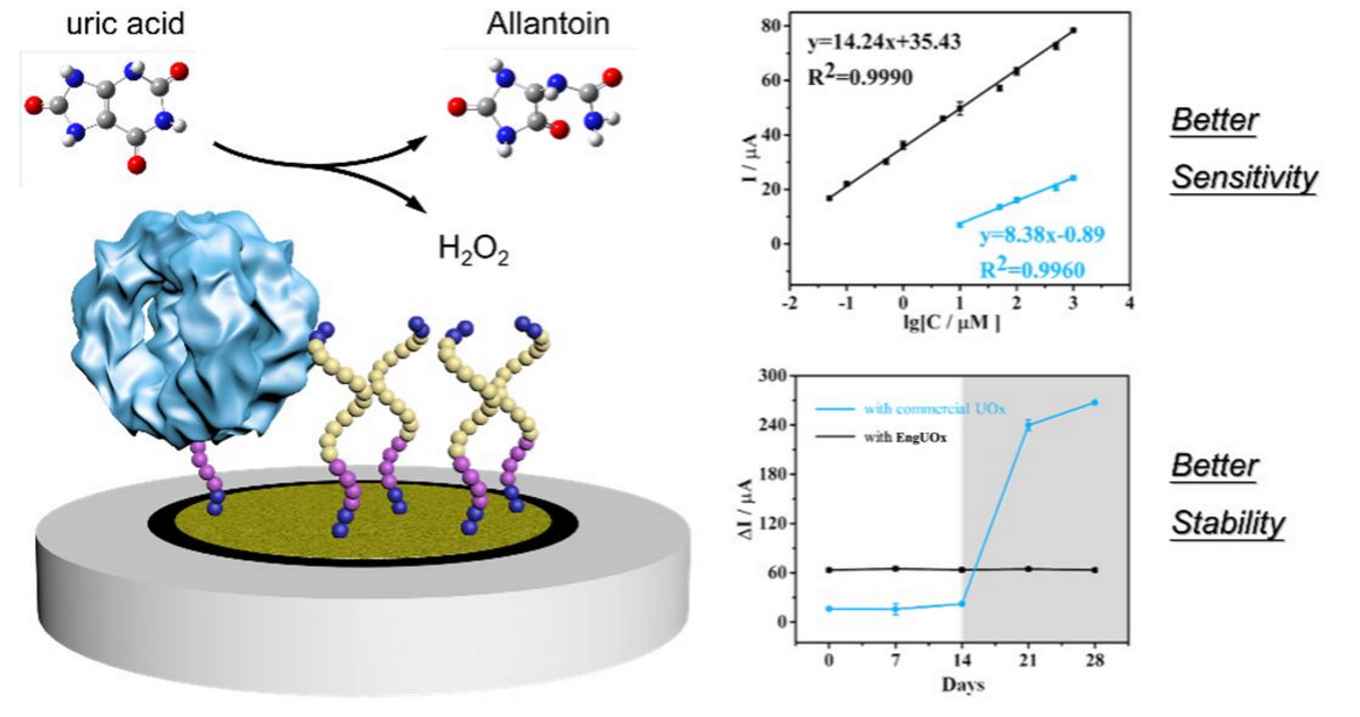High-performance electrochemical biosensor based on an engineered oxidoreductase enzyme
23 June 2023

The ChemComm paper describes the design and development of a biosensing platform for the highly sensitive and reliable detection of uric acid within a wide linear range of concentrations. The work shows how the performance of electrochemical biosensors can be improved by implementing engineered enzymes. It also reiterates the effectiveness of biochemical techniques in advancing the biosensing field and provides a robust strategy for the evolution of similar sensors.
First author of the paper is Zhen Wei who is a PhD candidate both with the Biocatalysis research group led by Prof. Francesco Mutti and the Heterogeneous Catalysis and Sustainable Chemistry group led by Prof. Gadi Rothenberg. Other researchers involved are Tanja Knaus from the Biocatalysis group; Yuxin Liu, a visiting PhD student from the Max Planck Institute of Colloids and Interfaces in Potsdam, Germany; Ziran Zhai and Andrea Gargano from the Analytical Chemistry group; and Ning Yan from the Heterogeneous Catalysis and Sustainable Chemistry research group.
High sensing performance
The HIMS researchers constructed a high-performance biosensor for detecting uric acid by immobilizing an engineered urate oxidase on gold nanoparticles deposited on a carbon-glass electrode and using thioglycolic acid as a linker. Critical for a high sensing performance was the further derivatization of the electrode with glutathione (GSH) and the use of bovine serum albumin (BSA) as impedance probe. This biosensor showed a low limit-of-detection (9.16 nM), a high sensitivity (14 μA/μM), a wide range of linearity (50 nM–1 mM), and more than 28 days lifetime.
The bioelectrode was characterized and the fabrication procedure was monitored by using scanning electron microscopy (SEM), energy dispersive X-ray spectrometry (EDS), cyclic voltammetry (CV), electrochemical impedance spectroscopy (EIS) and FT-IR spectroscopy.
Paper details
Zheng Wei, Tanja Knaus, Yuxin Liu, Ziran Zhai, Andrea F. G. Gargano, Gadi Rothenberg, Ning Yan and Francesco G. Mutti: A high-performance electrochemical biosensor using an engineered urate oxidase. Chem. Commun., 2023, Advance Article published 30 May 2023. DOI: 10.1039/D3CC01869E
See also
- Research group Biocatalysis
- Research group Heterogeneous Catalysis and Sustainable Chemistry
- Research group Analytical Chemistry